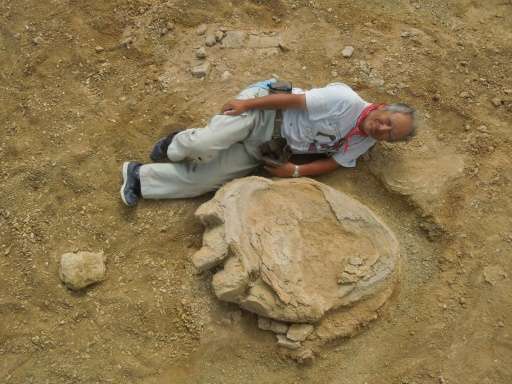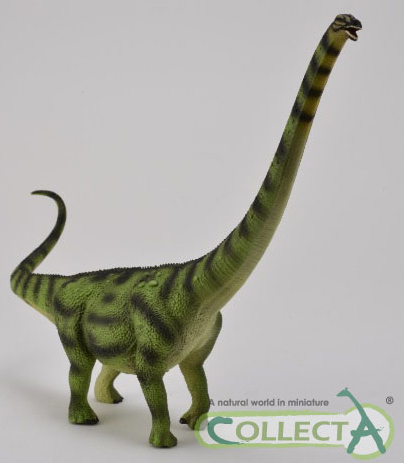Giant Dinosaur Footprint from the Gobi Desert
Giant Dinosaur Footprint from the Gobi Desert
The Upper Cretaceous formations of the Gobi Desert have provided scientists with a treasure trove of dinosaur fossil bones and teeth to study. Trace fossils such as footprints are much rarer. However, last month a joint Japanese and Mongolian research team uncovered a beautifully preserved natural cast of a giant plant-eating dinosaur’s foot. The footprint, which represents the left hind foot of a titanosaur, is estimated to be between ninety to seventy million years of age and it was made by a dinosaur not currently known (most probably), from any bones within a museum’s collection.
Gobi Desert Fossil Discovery
The ancient, fossilised footprint was discovered as a joint research team from the Okayama University of Science (Okayama Prefecture, Japan) and researchers from the Institute of Palaeontology and Geology of the Mongolian Academy of Sciences explored exposed Upper Cretaceous sediments in the Gobi Desert.
Professors are a Great Way to Show the Size and Scale of Dinosaur Tracks

Professor Shinobu Ishigaki (Okayama University of Science) provides the scale for the dinosaur print.
Picture credit: Okayama University of Science
In the picture above Professor Shinobu Ishigaki (Okayama University of Science), is lying next to the giant footprint. His head is towards the rear of the foot and clearly defined claw impressions can be seen on the front of the footprint. The dinosaur was walking towards the left of the photograph (direction of travel).
The exact location of the fossil find is a closely guarded secret. Unfortunately, despite strict laws, the illegal export of many dinosaur fossils from the Gobi Desert still occurs and there is a significant black market trade in such ancient artefacts.
Giant Dinosaur Footprint
The print was discovered on August 21st and it measures 106 centimetres long and 77 centimetres wide (maximum diameter).
Commenting on the importance of this discovery, Professor Ishigaki, the leader of the research team from the Okayama University of Science, stated:
“A whole skeleton of a giant dinosaur that left such a massive footprint has yet to be uncovered in Mongolia. A fossilised skeleton of such a dinosaur is expected to be eventually discovered.”
An Illustration of a Typical Titanosauriform (Daxiatitan)
Picture credit: Everything Dinosaur
The picture (above) shows a titanosaur. It is the sort of dinosaur that could have produced the giant dinosaur footprint. The figure is a CollectA titanosaur model.
To view this model collection: CollectA Models (Prehistoric Life).
Estimating the Size of the Maker of the Track
Although it is not possible to give an accurate estimate of the dinosaur’s size, the individual who made this print may have exceeded twenty-five metres in length. The print is a natural cast created by sandy sediments infilling the impressions in the ground caused by the dinosaur walking over a muddy substrate.
Commenting on this fossil find a spokesperson from Everything Dinosaur added:
“Titanosaurs are wide-bodied sauropods [long-necked, plant-eating dinosaurs] that probably evolved sometime in the Late Jurassic and survived until the Cretaceous mass extinction event. They are the only sauropods known to have survived into the Late Cretaceous. The exceptional preservation of this natural cast makes this discovery extremely significant. The shape of the claws can be made out and even the texture of the bottom of the foot has been preserved.”
Trace Fossils are Important
Trace fossils are important as they preserve evidence of activity, as in this case the footprint of a huge, plant-eating dinosaur. Not only does this track provide information on the shape of dinosaur’s feet but it also provides valuable information on the ways in which they walked.
To read about some even bigger sauropod tracks discovered in France: 150 million-year-old Sauropod Prints from France.
For an article about a probable new titanosaur from Brazil: A New Brazilian Titanosaur (probably).
To read an article published earlier this year about a new titanosaur from Argentina: New Late Cretaceous Titanosaur from Patagonia.


